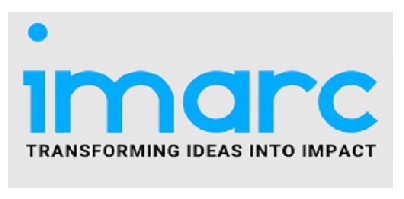Manufacturing Industry Today
Potato Starch Manufacturing Plant Setup Report 2025: Business Plan, and Capital Investment
Potato starch is a fine, white powder extracted from the cells of potatoes. It is rich in carbohydrates and contains minimal fat or protein, making it a popular thickening agent in the food industry. Its neutral taste, high binding strength, and clarity when cooked make it ideal for soups, sauces, noodles, and gluten-free baking. Beyond food, potato starch is also used in paper, textile, and pharmaceutical industries due to its adhesive and absorbent properties.
Setting up a potato starch manufacturing plant involves sourcing quality potatoes, installing equipment for washing, rasping, separating, and drying starch, and ensuring efficient waste management. Key considerations include land, labor, water supply, machinery costs, and compliance with food safety regulations.
IMARC Group’s report, titled “Potato Starch Manufacturing Plant Setup Cost 2025: Industry Trends, Plant Setup, Machinery, Raw Materials, Investment Opportunities, Cost and Revenue,” provides a complete roadmap for setting up a potato starch manufacturing plant. It covers a comprehensive market overview to micro-level information such as unit operations involved, raw material requirements, utility requirements, infrastructure requirements, machinery and technology requirements, manpower requirements, packaging requirements, transportation requirements, etc.
Potato Starch Industry outlook 2025
The potato starch industry is set for strong growth in 2025, driven by rising demand across food, pharmaceutical, textile, and biodegradable packaging sectors. Health-conscious consumers are fueling the use of clean-label and gluten-free ingredients, while industrial demand rises for eco-friendly alternatives. Advancements in processing technologies and expanding applications in emerging markets like Asia-Pacific further boost the outlook. Despite some supply chain risks, the industry remains promising due to its versatility, sustainability potential, and rising global consumption.
Request for a Sample Report: https://www.imarcgroup.com/potato-starch-manufacturing-plant-project-report/requestsample
Key Insights for Potato Starch Manufacturing Plant Setup
Detailed Process Flow
- Product Overview
- Unit Operations Involved
- Mass Balance and Raw Material Requirements
- Quality Assurance Criteria
- Technical Tests
Project Details, Requirements and Costs Involved:
- Land, Location and Site Development
- Plant Layout
- Machinery Requirements and Costs
- Raw Material Requirements and Costs
- Packaging Requirements and Costs
- Transportation Requirements and Costs
- Utility Requirements and Costs
- Human Resource Requirements and Costs
Buy Now: https://www.imarcgroup.com/checkout?id=10670&method=1911
Capital Expenditure (CapEx) and Operational Expenditure (OpEx) Analysis:
Project Economics:
- Capital Investments
- Operating Costs
- Expenditure Projections
- Revenue Projections
- Taxation and Depreciation
- Profit Projections
- Financial Analysis
Profitability Analysis:
- Total Income
- Total Expenditure
- Gross Profit
- Gross Margin
- Net Profit
- Net Margin
Key Cost Components of Setting Up a Potato Starch Plant
- Land and Infrastructure: Cost of purchasing or leasing land, building factory sheds, storage, and utilities
- Machinery and Equipment: Expenses for washers, grinders, separators, dryers, and packaging units
- Raw Materials: Procurement of high-quality potatoes in large quantities
- Labor and Staffing: Skilled and unskilled workforce wages, training, and management costs
- Utilities: Electricity, water, and fuel required for processing and drying operations
- Licensing and Compliance: Fees for environmental, food safety, and industrial approvals
- Transportation and Logistics: Movement of raw potatoes and finished starch to and from the facility
Speak to an Analyst for Customized Report: https://www.imarcgroup.com/request?type=report&id=10670&flag=C
Economic Trends Influencing Potato Starch Plant Setup Costs 2025
- Raw Material Price Volatility: Potato prices fluctuate due to climate impacts and unstable harvest yields.
- Rising Energy Costs: High electricity and fuel rates increase processing and drying expenses.
- Labor Market Pressures: Increased wages and skill shortages raise staffing costs.
- Logistics and Transportation: Elevated fuel prices and global shipping disruptions impact supply chains.
- Advanced Technology Investment: Costs rise due to adoption of AI-based automation and efficient machinery.
- Environmental Compliance Costs: Stricter sustainability regulations demand costly waste and water treatment systems.
- Competitive Market Dynamics: Pressure from alternative starch sources affects pricing and investment returns.
Challenges and Considerations for Investors
- Raw Material Dependency: Reliance on seasonal potato supply can impact production consistency.
- High Initial Investment: Significant capital required for land, equipment, and technology.
- Market Fluctuations: Price volatility in both raw potatoes and starch can affect profitability.
- Regulatory Compliance: Adhering to food safety, environmental, and industrial norms adds complexity.
- Supply Chain Risks: Transportation delays and storage issues can disrupt operations.
- Technological Upgradation: Staying competitive requires ongoing investment in modern processing methods.
- Global Competition: Competing with established global players may challenge new entrants on pricing and quality.
Conclusion
The potato starch industry presents a lucrative opportunity driven by rising demand across multiple sectors. With proper planning, efficient operations, and compliance, setting up a manufacturing plant can yield high returns. Investors must navigate raw material volatility and regulatory norms to capitalize on the market’s growth and sustainability potential.
𝗕𝗿𝗼𝘄𝘀𝗲 𝗠𝗼𝗿𝗲 𝗥𝗲𝗹𝗮𝘁𝗲𝗱 𝗥𝗲𝗽𝗼𝗿𝘁𝘀:
- Arrowroot Starch Manufacturing Plant: https://www.imarcgroup.com/arrowroot-starch-manufacturing-plant-project-report
- Pink Peppercorn Processing Plant: https://www.imarcgroup.com/pink-peppercorn-processing-plant-project-report
- Pre-Made Stews Manufacturing Plant: https://www.imarcgroup.com/pre-made-stews-manufacturing-plant-project-report
About Us: IMARC Group is a global management consulting firm that helps the world’s most ambitious changemakers to create a lasting impact. The company excel in understanding its client’s business priorities and delivering tailored solutions that drive meaningful outcomes. We provide a comprehensive suite of market entry and expansion services. Our offerings include thorough market assessment, feasibility studies, company incorporation assistance, factory setup support, regulatory approvals and licensing navigation, branding, marketing and sales strategies, competitive landscape, and benchmarking analyses, pricing and cost research, and procurement research.
Contact Us:
IMARC Group
134 N 4th St. Brooklyn, NY 11249, USA
Email: sales@imarcgroup.com
Tel No:(D) +91 120 433 0800
United States: +1–631–791–1145
Share on Social Media



Other Industry News
Ready to start publishing
Sign Up today!








